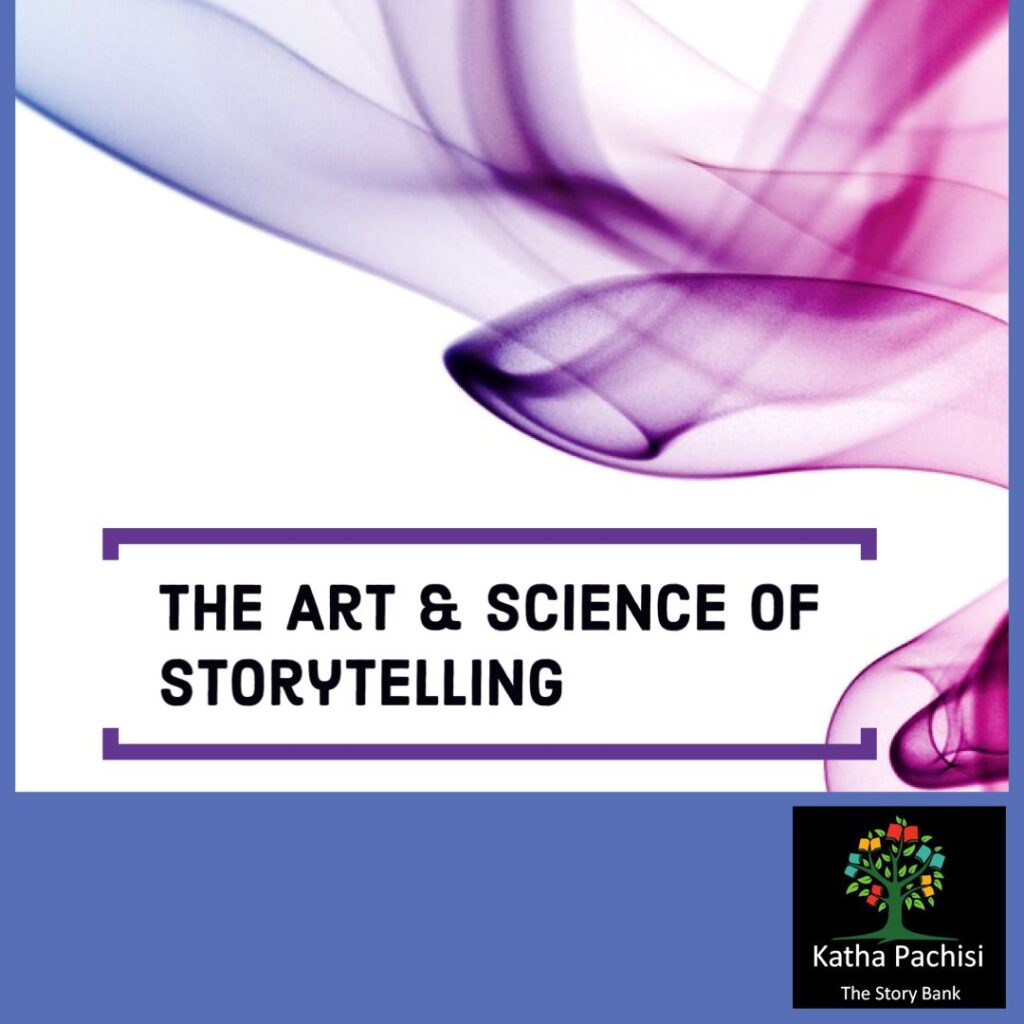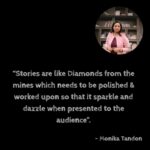
Storytelling is an art and it’s a science. Since it’s an art, it demands a creative approach from the storyteller; and since it’s a science, it demands an intellectual approach from the narrator. As it’s an art it requires creativity, practice, visualization, voice modulation skills, and vision. It’s a skill to acquire, to learn, and practice to master it. It’s like a muscle which needs to be built with consistent efforts and hard work. You don’t become a storyteller overnight; it’s a journey where your thoughts, your outlook, and your skills evolve. Stories can influence us in a number of ways as it helps us to remember the message, which leads to action. Storytelling has the power to educate, to engage, and to inspire the listeners. When the human brain encounters a good story, not only the language processing parts of our brain gets activated but also the area which experiences the events narrated in the story. Storytelling helps to provide stimulus to the brain, and a rush of chemicals is experienced by the story listener. One such chemical that is released is oxytocin which helps the audience to feel empathetic. And, empathy drives call to action. Paul Zak, founding director of the Centre for Neuroeconomics Studies at Claremont Graduate University, explains that stories that make us feel, care, connect, and empathize – which can produce oxytocin. The more oxytocin, the more empathy one feels.
Also, when you tell stories then people tend to remember what you say – stories are memorable and easy to remember.
To create an experience through narrative style, the teller visualizes the story & transports the listener in his or her world of story. It’s then that the listener’s brain experiences the rush of chemicals like cortisol, dopamine, and oxytocin. Cortisol helps in formulating the memory by making the point stick so that we remember the information. Dopamine helps in regulating our emotional responses by keeping us engaged in the conversation. Oxytocin is incredibly important to storytelling because, as we know, stories change our behaviour. When our brains encounter a good story, oxytocin is released, causing us to feel empathy. The empathy is what causes us to want to take action. To trigger the rush of oxytocin one must follow the narrative arc of hardships and triumphs of the protagonist.
It’s known that storytelling is the oldest form of art known to mankind. It’s an art because of the creative approach attached to it – how you choose to tell the story that is the way storyteller narrates the story with inculcating the emotions, hand gestures, & illustrations. The amalgamation of theatrical techniques to create an experience for the audience is an extension to the art of storytelling.
At workplace or in classroom there are primarily three types of learners in any group. Approximately 40% are auditory learners who learn through discussions and conversations. Another 40% are visual learners who learn through illustrations and visuals, and remaining 20% are kinaesthetic learners who learn best through doing or experiencing something. The most interesting aspect of storytelling is that it relates to all types of learners, that is visual learners, auditory learners, and kinaesthetic learners. In any audience you will always find a good mix of all these types of learners and they will leverage the understanding that is created by storytelling in their own unique way. The auditory learner will be able to connect to storyteller’s voice and the language strategies in the content while the visual learners will create an imagery world through visual demonstrations such as images and the body language techniques of the storyteller, and the kinaesthetic learners connect through emotional engagement during the storytelling experience and will get transported into the world of story with the storyteller going on the emotional highs and lows.
